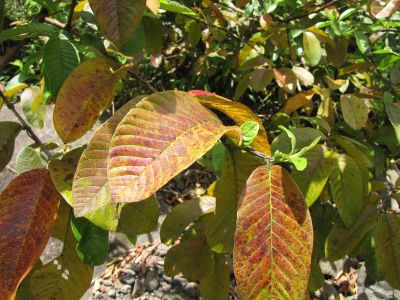Why are My Guava Leaves Changing Color?
Guava trees are normally small evergreen trees. Healthy leaves are stiff and slightly leathery, a dull green, and smell good when you crush them. If you see purple guava leaves, you may be asking, “Why are my guava leaves changing color?” Although there are several possible causes, the most likely reason for purple or red guava leaves is chilly weather. If you see your guava tree turning red or purple, it may be caused by cold. Guavas are native to tropical areas and only grow in very warm areas like Hawaii, southern Florida, or southern California. Ideally, these trees prefer a temperature range between 73 and 82 degrees F. (23–28 C.) They can be damaged or killed by temperatures of 27 to 28 degrees F. (-3 to -2 C.), while mature trees are somewhat hardier. If the temperature has dropped near or below these levels lately, this cold snap is likely the cause of your red or purple guava leaves. You’ll need to assist the tree to stay warm. If the guava tree turning red/purple is young, transplant it to a warmer, more weather-protected site near the house. If it is a mature tree, consider using a plant cover when temperatures are likely to fall.
Other Causes for a Guava Tree Turning Red/Purple
You may also see the leaves of your guava tree turning red if it has spider mites. These are tiny insects that lurk on the underside of the leaves. You can get rid of them by hosing off the leaves or washing them with a solution of dishwashing soap and water. When guava leaves are turning purple or red, the tree may also be lacking required nutrients. This is especially true when they are grown in alkaline soil. Be sure that the tree is growing in soil with some organic content and apply an appropriate fertilizer to keep the tree healthy.
